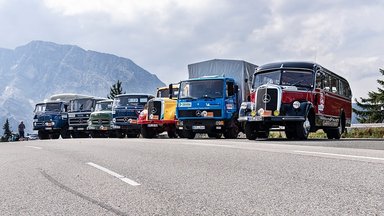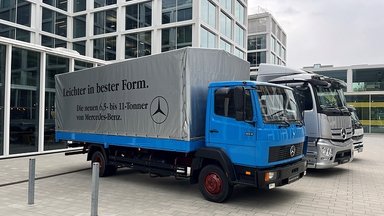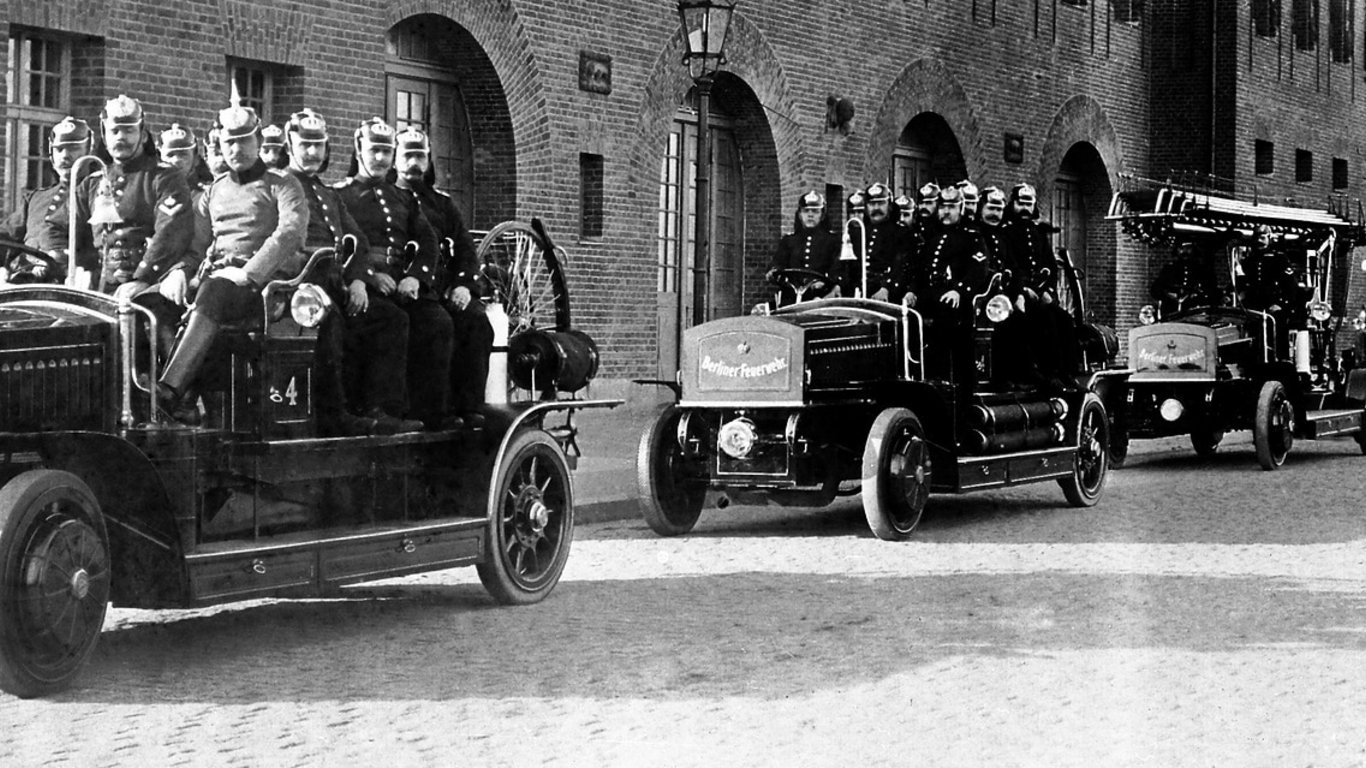
Which Daimler engine is as strong as 32 firefighters?
Download
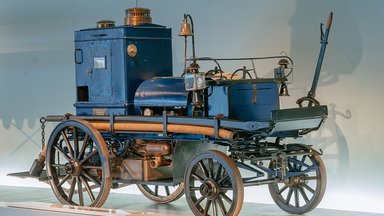
Which Daimler engine is as strong as 32 firefighters?
Firefighting technology is an early field of innovation at Daimler-Motoren-Gesellschaft The high-speed combustion engine from 1892 drives the fire pump German term "Feuerwehr” for “fire brigade” originates 175 years ago in Baden Mercedes-Benz Museum Close-Up: Cars, Architecture and Exhibition – No. 5/2022 Stuttgart. “Close-up” – the name of the series by the Mercedes-Benz Museum says it all. Each instalment tells a…
- Firefighting technology is an early field of innovation at Daimler-Motoren-Gesellschaft
- The high-speed combustion engine from 1892 drives the fire pump
- German term "Feuerwehr” for “fire brigade” originates 175 years ago in Baden
- Mercedes-Benz Museum Close-Up: Cars, Architecture and Exhibition – No. 5/2022
Stuttgart. “Close-up” – the name of the series by the Mercedes-Benz Museum says it all. Each instalment tells a surprising, exciting or behind-the-scenes story by shining a spotlight on details of a vehicle, an exhibit or an element of architecture and design. In the spotlight this time: the Daimler motor fire engine from 1892.
No. 5/2022: Daimler motor fire engine
Two types of hp: Pumping water for firefighting requires a lot of power over an extended period. The Daimler motor fire engine, built in 1892, uses a 3-litre 2-cylinder engine with 5.1 kW (7 hp) and a pump to deliver 300 litres of water per minute. At that time, however, the fire brigade still needed the eponymous type of horsepower to get to the scene of the incident: in front of the vehicle, powerful horses put their backs into it. This is because the combustion engine only drives the water pump. At the time, this is a very advanced solution.
Carriage technology: Gottlieb Daimler’s first car of 1886 was a horse-drawn carriage with a combustion engine. The motorised fire engine, on the other hand, is actually a carriage with classic turntable steering. Necessary components such as the drawbar are stowed on the side of the vehicle within easy reach – clearly visible on the Mercedes-Benz Museum exhibit in Legend Room 1: Pioneers – The Invention of the Car, 1886 to 1900. This means that the fire brigade can quickly harness up and move out in the event of an alarm.
Naming: Firefighting technology and the organisation of fire protection in Germany made rapid progress at the end of the 19th and beginning of the 20th century. This is promoted by experiences such as the great fire of Hamburg in 1842, which destroyed a third of the city. After that, the realisation that firefighting needs to be improved takes hold. The first German professional “Feuerwehr”, the German term for “fire brigade”, was founded in Berlin as early as 1851. The term has only been in use there for four years: the earliest record of the word is exactly 175 years old and comes from a report of the Karlsruhe fire brigade to the municipal council dated 24 August 1847. Immediately after its foundation in the same year, it initially still operates under the name “Pompiercorps”.
Pioneer: The new technology of the high-speed combustion engine, developed by Gottlieb Daimler and Wilhelm Maybach for a variety of purposes, fits in with the spirit of optimism among German fire brigades in this era. Just three years after the patent application for the innovative single-cylinder “grandfather clock” engine in 1885, Daimler applied for a patent for a fire engine with a 1 hp single-cylinder engine on 29 July 1888. The exhibit in the Mercedes-Benz Museum follows the technical principle described in German Imperial Patent 46779. Those who want to have a look at the “grandfather clock” will find it standing not far from the fire engine in the Museum.
Baptism of fire: The fire extinguisher on display proved its worth in a major fire at a bed spring factory in Cannstatt as early as 1892. For five hours, the pump continuously delivers water to extinguish the roof truss fire at a height of 20 metres. A real feat of strength – it would have taken at least 32 firefighters to operate the pump with human power, and it would have been an energy-sapping operation. The practical example underlines the high efficiency of the Daimler engine as a drive for fire pumps.
Improved development: Four years after Daimler’s patent application for his motorised fire engine, the model built in 1892 was considerably improved in performance, equipment and ergonomics compared to the first version. The exhibit in the Mercedes-Benz Museum shows how much emphasis has been placed on ergonomics, among other things: for the machinist, there is a stable platform in the rear from which he operates the engine, which is protected in a sheet metal housing. The fire pump itself is located in the middle of the vehicle. Clearly separated are the intake of the extinguishing water on the right side of the system via a screw connection and the discharge with high pressure into the extinguishing hoses on the left side via a bayonet connection.
Fast as the fire brigade: Time is valuable in a firefighting mission. For this reason, the motorised fire engine is equipped with a type of quick extinguishing device: To the left in the body are two hose reels secured with ratchet wheels. In use, the spring-loaded pawls are released via a lever, the hoses can be unrolled and connected to the pump in a few seconds.
Special signal: When the fire brigade goes out today, it warns other road users by means of blue rotating beacons (“flashing blue light”) and a usually compressed air-driven siren, colloquially called “Martinhorn” in German after the inventor, the German Signal Instrument Factory Max B. Martin. Both warning systems were not introduced in Germany until the early 1930s. The motorised fire engine therefore has a classic hand bell to the right of the coach box, which the firefighters used to clear the way. The lighting system is limited to two carriage lanterns on the left and right of the vehicle.
Innovative: Fire brigades were open to the wide range of technologies that were being developed in parallel in the early days of the car. This is shown by examples from the product history of Mercedes-Benz in the early 20th century. The first German fire engine with a petrol drive was built in 1906 by the Süddeutsche Automobilfabrik Gaggenau (SAG), which became part of Benz & Cie. in 1910. The Mannheim company writes about this in 1914: “Benzwerke Gaggenau was the first factory to supply a fire-fighting vehicle with an explosion engine drive and still occupies first place today.” Two years later, the Berlin fire brigade opted for a different drive technology: it put a complete fire engine with four Mercédès-Électriques into service on 14 September 1908. The battery-electric vehicles produced by Österreichische Daimler-Motoren-Gesellschaft were given bodies as a gas fire engine, steam fire engine, tender and ladder truck.
Variety: For many decades now, the car has been established as a versatile helper for fire protection. Today, the range extends from the almost 70-metre-long turntable ladder to the all-terrain firefighting vehicle based on the Unimog for fighting forest fires. In vehicles with a permanently installed fire pump, the traction motor also serves as the pump drive. The Mercedes-Benz Museum is showing two highlights from the history of fire engines in Collection Room 3: The Gallery of Helpers. Here you can see a Benz motor fire engine from 1912 and a Mercedes-Benz LF 3500 turntable ladder DL 22 from 1952.
Article assets

Which Daimler engine is as strong as 32 firefighters?
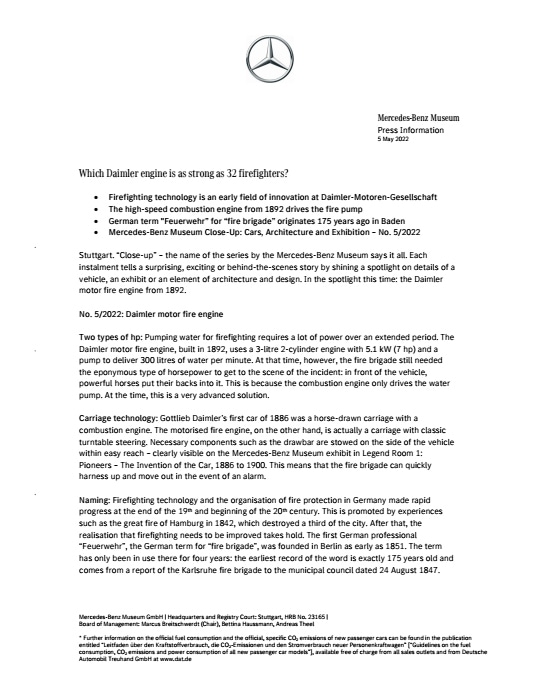
Which Daimler engine is as strong as 32 firefighters?
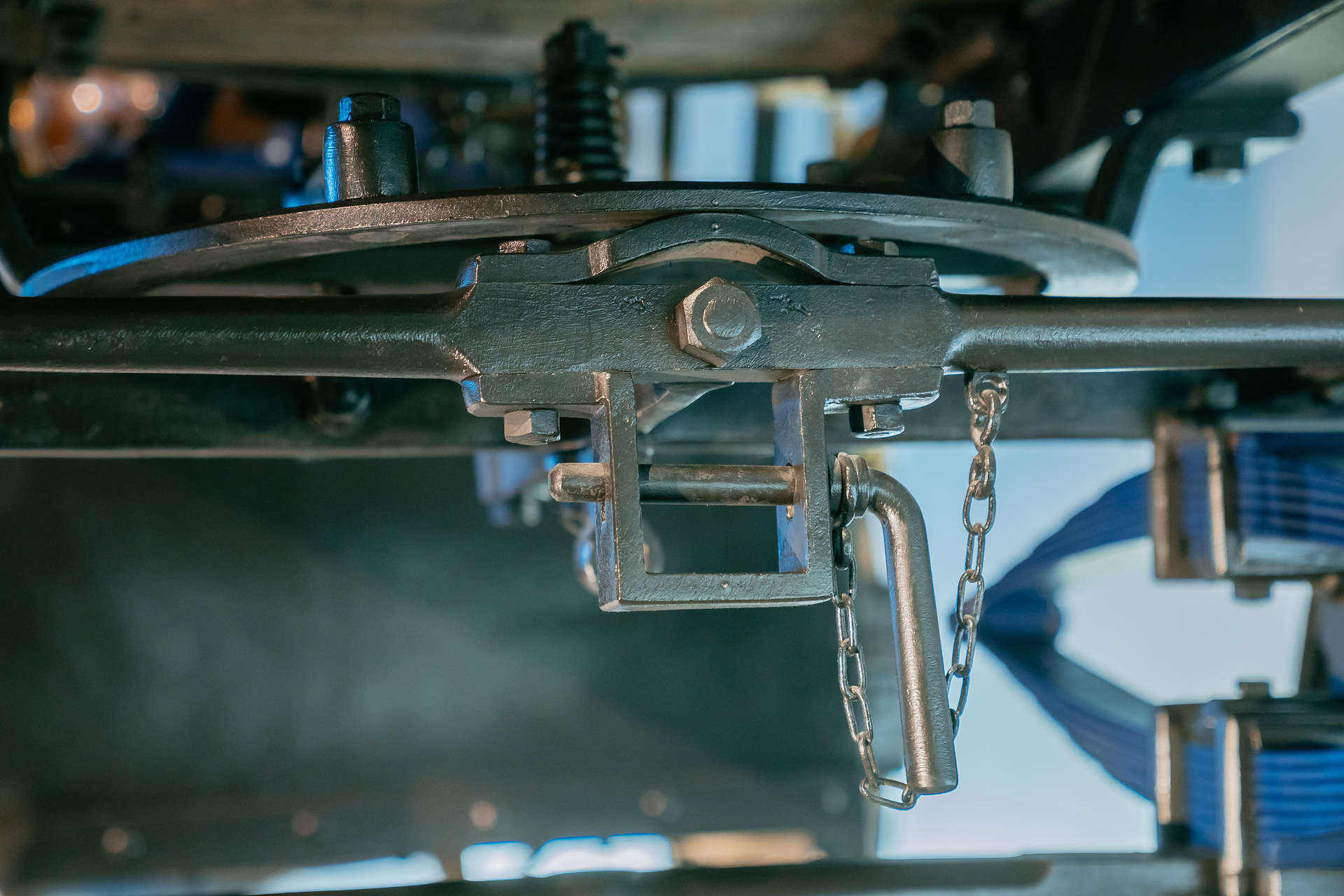
Which Daimler engine is as strong as 32 firefighters?

Which Daimler engine is as strong as 32 firefighters?

Which Daimler engine is as strong as 32 firefighters?

Which Daimler engine is as strong as 32 firefighters?

Which Daimler engine is as strong as 32 firefighters?

Which Daimler engine is as strong as 32 firefighters?

Which Daimler engine is as strong as 32 firefighters?

Which Daimler engine is as strong as 32 firefighters?

Which Daimler engine is as strong as 32 firefighters?

Which Daimler engine is as strong as 32 firefighters?

Which Daimler engine is as strong as 32 firefighters?

Which Daimler engine is as strong as 32 firefighters?

Which Daimler engine is as strong as 32 firefighters?

Which Daimler engine is as strong as 32 firefighters?

Which Daimler engine is as strong as 32 firefighters?

Ulrike Burkhart
Spokesperson Mercedes-Benz Trucks Product, Service & eTruck
ulrike.burkhart@daimlertruck.com
+49 160 861 3757

Carola Pfeifle
Spokesperson Product Communications Mercedes-Benz Trucks
carola.pfeifle@daimlertruck.com
+49 160 8612423

Udo Sürig
Spokesperson Setra Product & Service Communications
udo.suerig@daimlertruck.com
+49 160 86 16 312

















